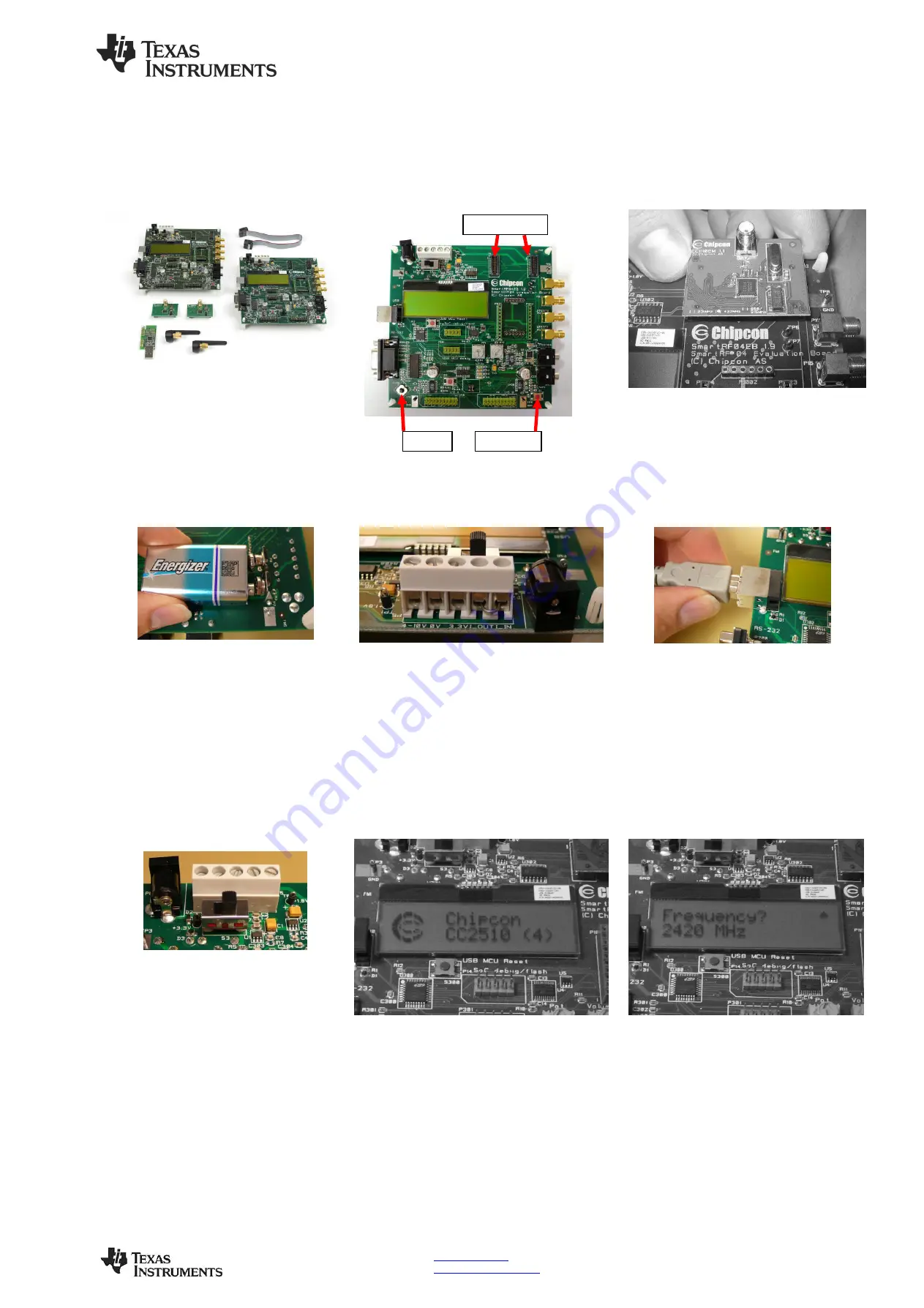
SWRU079B
September 2010
Web sites:
www.ti.com/lprf
E2E Forum:
www.ti.com/lprf-forum
Make sure to subscribe to the Low-Power RF
Newsletter to receive information about updates
to documentation, new product releases and
more. Sign up on the TI web pages.
CC2510-CC2511DK Quick Start Instructions
Opening the box an running the Packet Error Rate Test
1. Kit Contents
2 x SmartRF04EB
2 x CC2510EM
1 x CC2511 USB Dongle
2 x 2.4GHz antennas
2 x USB cables
1 x USB extension cable
Documentation
2. EB overview
3. Plug EM into EB
Insert a CC2510EM into both SmartRF04EBs.
The connectors will only fit in one position, so
that the EM cannot be inserted the wrong way.
Do not force the EM. Remember to mount the
antenna as well.
4a. Battery power
There are three different ways of applying
power to the EB:
The first method involves using a battery, either
a 9V or a 4xAA battery pack connected to the
battery connector on the bottom side of the
board
4b. DC power
The second method applies DC power using
the DC input jack (right in picture, centre is +,
sleeve is ground), or by connecting a 4-10V
voltage source between the 4-10V and 0V
terminals of the power connector (left in
picture). It is also possible to connect a 3.3V
voltage source between the 3.3V and 0V
terminals. The on-board voltage regulators will
be bypassed in this case.
4c. USB power
The EB can also be powered from the USB bus.
Make sure that the SmartRF
™
Studio software
is installed before connecting the EB to the PC;
otherwise you may experience problems in
installing it later due to driver issues.
Note that if multiple power sources are
connected, the source with the highest voltage
will power the EB. This means that you should
disconnect any attached battery when using a
lab supply or USB power; otherwise the battery
will be drained.
5. Set power switch
If a 3.3V source is used as described in 4b
above, the switch should be set to the leftmost
position. For all other cases, the switch should
be set to the rightmost position. This switch can
be used to turn off the EB by switching it to the
opposite position of that used to turn it on.
6. Packet error rate test
When power is applied to the board, the test
program will start. You should see the Chipcon
logo with chip name and revision number as
shown above on the LCD display on both EBs.
Pushing button S1 in the lower right corner of the
board will show the first menu item.
7. Select Frequency
Select the frequency that you want to use (2420
MHz, 2440 MHz, 2460 MHz or 2480 MHz).
Move the joystick up or down to display the
choices and push button S1 in the lower right
corner of the board to select the displayed
frequency.
Joystick
Button S1
EM connectors



